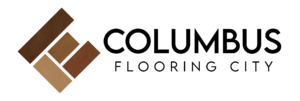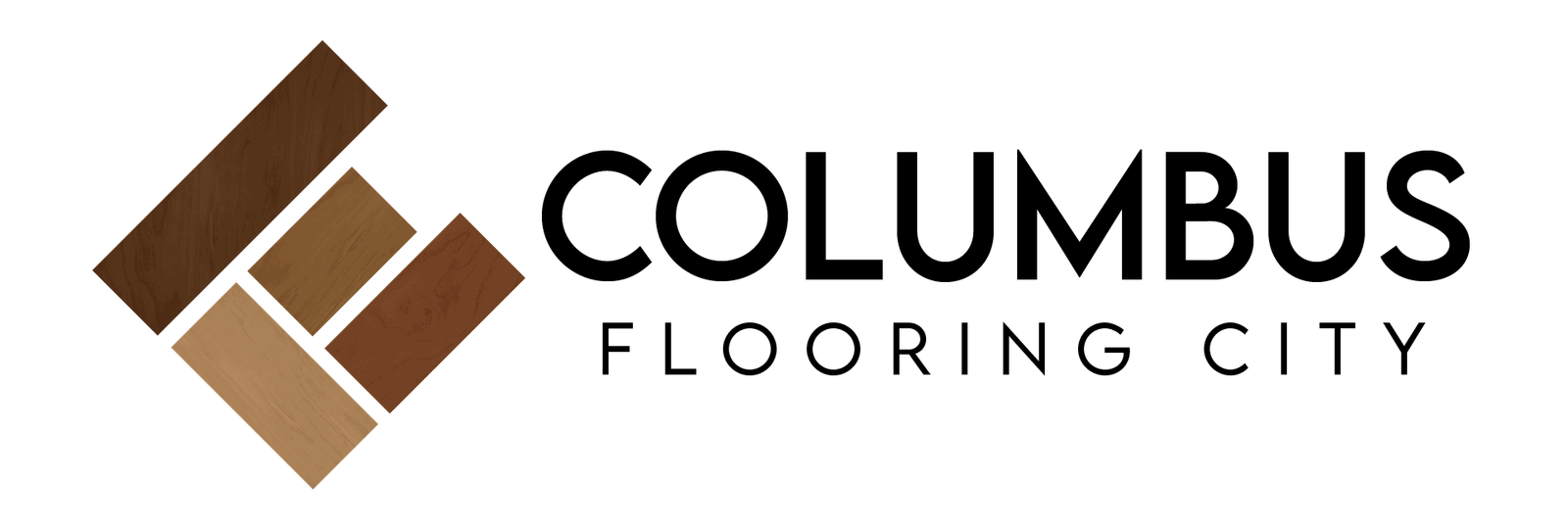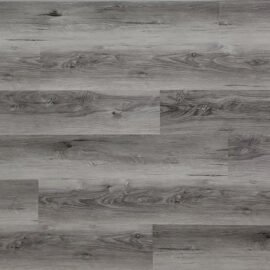If you’re in search of a flooring option that seamlessly blends the timeless elegance of wood with enhanced durability and stability, look no further than engineered wood flooring. With its innovative construction and versatility, engineered wood flooring has become a sought-after choice for homeowners, designers, and architects alike.
When comparing flooring options, it’s natural to inquire, ‘What is engineered wood flooring’s resistance to scratches and dents? So, let’s embark on a journey to explore the world of engineered wood flooring, unraveling its composition, uncovering its advantages, mastering the installation process, and discovering the best practices for maintenance and longevity. Get ready to discover how engineered wood flooring can elevate your living spaces to new heights of beauty and functionality.
Columbus Flooring City showcases distinctive flooring options that make a lasting statement, from bold and eye-catching patterns to rich and luxurious textures, ensuring your floors become the focal point of your interior design.
Composition and Construction of Engineered Wood Flooring
Engineered wood flooring is a layered product, carefully designed to optimize strength and performance. Understanding its composition is crucial to appreciating its benefits. Let’s take a closer look at the different layers that make up engineered wood flooring:
- Wear Layer: This is the topmost layer of the flooring, responsible for protecting the wood veneer from wear and tear. It is typically made of durable hardwood species, such as oak or maple.
- Core Layer: The core layer forms the foundation of the flooring and provides stability. It consists of multiple layers of plywood or high-density fiberboard (HDF). These layers are bonded together at right angles, creating a strong and durable base.
- Backing Layer: The backing layer adds stability and moisture resistance to the flooring. It is usually made of a thin layer of plywood or HDF.
Types of wood used in engineered wood flooring vary, offering a wide range of aesthetics to suit different preferences and design styles. Common options include oak, walnut, maple, and cherry. Adhesive and bonding methods play a crucial role in the construction process, ensuring the layers remain securely attached.
Comparing Engineered Wood Flooring with Solid Wood Flooring
While engineered wood flooring shares many similarities with solid wood flooring, there are some key differences worth considering. Let’s compare the two:
Composition and Construction:
To grasp the concept, it’s important to delve into the question, ‘What is engineered wood flooring made of? Solid wood flooring is made entirely of solid wood, while engineered wood flooring is composed of multiple layers. This layered construction gives engineered wood flooring enhanced stability and moisture resistance.
Performance and Durability:
Both types of flooring have their strengths. Solid wood flooring can be sanded and refinished multiple times, allowing for a longer lifespan. However, engineered wood flooring’s layered construction provides superior stability and resistance to moisture-related issues, making it suitable for a wider range of applications.
Cost Considerations:
For homeowners seeking a cost-effective and durable flooring option, the question, What is engineered wood flooring? becomes significant. Engineered wood flooring tends to be more cost-effective than solid wood flooring. With the ability to use less expensive wood species in the core layers, engineered wood flooring provides a budget-friendly alternative without compromising on quality and aesthetics. However, the engineered wood flooring cost depends on numerous factors.
Maintenance and Longevity:
Proper maintenance is essential for both types of flooring. While solid wood flooring may require more regular maintenance, such as refinishing, engineered wood flooring is generally easier to maintain. With proper care, both types of flooring can last for decades.
Stay ahead of the trends with Columbus Flooring City’s innovative flooring solutions that blend style, durability, and cutting-edge technology.
Choosing the Right Engineered Wood Flooring
For those unfamiliar with the term, ‘What is engineered wood flooring?’ can be a common question. Selecting the perfect engineered wood flooring for your space involves considering a few essential factors. Let’s break it down into a step-by-step guide to help you make an informed decision:
Assessing Your Needs and Lifestyle:
Are you a busy family with kids and pets running around? Or perhaps you’re designing a more serene space? Understanding your lifestyle and the level of foot traffic in the room where the flooring will be installed is crucial. This knowledge will guide you in selecting the right level of durability and finish that can withstand the demands of your daily life.
Considering the Room and Subfloor Conditions:
Every room has its own unique characteristics, and it’s important to evaluate them when choosing engineered wood flooring. Take a moment to assess the moisture levels and temperature fluctuations in the room. Is it a bathroom where humidity levels tend to be higher? Is it an area exposed to direct sunlight that experiences temperature variations? Additionally, consider the type of subfloor you have, as it will impact the engineered wood flooring installation method and the overall performance of the flooring. By understanding these conditions, you can select an engineered wood flooring option that is best suited for your specific environment.
Understanding Grading and Thickness Options:
When it comes to engineered wood flooring, there are different grades and thicknesses available. Grades indicate the quality and appearance of the wood veneer. If you’re aiming for a more refined and pristine look, you might lean towards a higher grade. However, if you prefer a more rustic or natural aesthetic, a lower grade might be more suitable. Thickness plays a role in the stability and durability of the flooring. Consider the level of foot traffic in the room and the expected wear and tear. For high-traffic areas, you might opt for thicker engineered wood flooring that can withstand heavy use without compromising its integrity.
Exploring Different Finishes and Styles:
For those seeking a flooring choice that combines affordability and beauty, the question, ‘What is engineered wood flooring’s aesthetic appeal?’ arises. One of the most exciting aspects of engineered wood flooring is the wide array of finishes and styles available. From smooth and polished to distressed and textured, there’s something to suit every design preference. Think about the overall look and feel you want to achieve in your space. Are you aiming for a sleek and modern aesthetic? Or perhaps you prefer a more rustic and vintage vibe? By exploring the various finishes and styles, you can select engineered wood flooring that perfectly complements your interior décor and brings your vision to life.
Revitalize your home’s aesthetic and explore Columbus Flooring City’s vast selection of flooring materials to revitalize and transform the look of any room.
Evaluating Warranties and Certifications:
When investing in engineered wood flooring, it’s essential to choose a reputable manufacturer that offers reliable warranties and certifications. A solid warranty provides peace of mind, ensuring that you’re protected against any unforeseen issues. Additionally, certifications such as the Forest Stewardship Council (FSC) or Floor Score indicate that the product meets industry standards for quality and sustainability. By considering warranties and certifications, you can confidently select a flooring option that aligns with your values and quality expectations.
Installation and Maintenance of Engineered Wood Flooring
Understanding the maintenance requirements of engineered wood flooring is key to answering the question, ‘What is the best way to care for it? Proper engineered wood flooring installation and maintenance are crucial for the longevity and performance of engineered wood flooring. Here are some guidelines to follow:
Pre-Installation Preparation and Acclimation:
Allow the flooring to acclimate to the room’s temperature and humidity levels before installation. Follow the manufacturer’s recommendations regarding acclimation time and methods.
Trust Columbus Flooring City to provide you with top-notch flooring products that combine superior craftsmanship and materials, accompanied by hassle-free installation services for a seamless and satisfying experience.
189-07
Installation Methods and Techniques:
When considering installation options, it’s important to know, ‘What is engineered wood flooring’s compatibility with radiant heating? Depending on the chosen installation method, follow the manufacturer’s guidelines and use the appropriate tools. Whether you opt for floating, glue-down, or nail-down installation, ensure the subfloor is clean, level, and dry.
Care and Maintenance Guidelines:
Taking care of your engineered wood flooring is key to preserving its beauty and ensuring its longevity. Follow these simple care tips that help how to clean engineered wood floors to keep them looking stunning for years to come:
Regular Cleaning Practices:
To maintain the pristine appearance of your engineered wood flooring, incorporate regular cleaning into your routine. Start by sweeping or vacuuming the floor to remove any loose dirt and debris. This simple step prevents particles from scratching the surface of the floor. For a more thorough clean, use a damp mop with a mild cleaning solution specifically formulated for engineered wood flooring. Avoid using excessive water or harsh chemicals, as they can damage the wood or the protective finish.
Dealing with Spills and Stains:
Accidents happen, and when spills occur, it’s important to act quickly to prevent moisture damage to your engineered wood flooring. Immediately wipe any spills using a soft, absorbent cloth or paper towel. This helps prevent liquid from seeping into the wood and causing swelling or discoloration. For stubborn stains that resist normal cleaning methods, reach for manufacturer-approved cleaning products for cleaning engineered wood floors. These specially formulated cleaners are designed to effectively remove stains without harming the surface of your flooring.
Protecting Against Scratches and Damage:
Preventing scratches and damage to your engineered wood flooring is an important part of its maintenance. Take proactive steps to protect your floors and maintain their pristine condition. Place mats or rugs at entrances and high-traffic areas to trap dirt and debris before it reaches your flooring. This simple measure not only prevents scratches but also helps preserve the finish. Additionally, consider using felt pads under the legs of your furniture to minimize the risk of scratches when moving or rearranging items. Avoid dragging heavy objects across the floor, as this can leave unsightly marks. Instead, use furniture sliders or enlist a helping hand when moving large items.
Refinishing Options:
One of the advantages of engineered wood flooring is the possibility of refinishing engineered wood floors, depending on the thickness of the wear layer. Over time, your floors may show signs of wear, including scratches or fading. In such cases, refinishing can restore their original beauty.
By following these care and maintenance guidelines, you can extend the lifespan of your engineered wood flooring and keep it looking radiant for years to come. Regular cleaning, prompt spill cleanup, preventive measures against scratches, and professional refinishing when necessary are all part of the recipe for maintaining your engineered wood floors’ natural elegance and durability. Embrace these practices, and your floors will continue to impress with their timeless beauty.
Elevate your space with Columbus Flooring City and discover a world of flooring possibilities that add sophistication and charm to your home.
Common Concerns and Misconceptions:
Address common misconceptions, such as engineered wood flooring being inferior to solid wood or lacking durability. Clarify the benefits and debunk any myths surrounding this flooring option.
Ask Installation-Related Queries:
Answer questions about installation, including the best method for different subfloor types, DIY installation feasibility, and the need for professional assistance.
Maintenance and Repair Inquiries:
Provide tips for maintaining engineered wood flooring, addressing questions about cleaning products, dealing with scratches, and refinishing engineered wood floor options.
Longevity and Durability Concerns:
When it comes to durability and stability, the question, ‘What is engineered wood flooring’s performance over time?’ becomes relevant. Assure readers that when properly installed and maintained, engineered wood flooring can last for decades. Discuss factors that may affect longevity, such as foot traffic and maintenance practices.
Eco-Friendly Aspects and Sustainability Questions: Highlight the sustainability of engineered wood floorings, such as the use of renewable materials, responsible sourcing practices, and certifications.
Why Engineered Wood Flooring is the Best Choice?
Engineered wood flooring combines the beauty of real wood with enhanced stability, durability, and versatility. When considering flooring options, many homeowners wonder, ‘What is engineered wood flooring? Its many advantages make it a popular choice for homeowners seeking a stunning and long-lasting flooring option. Engineered wood flooring offers several advantages over traditional solid wood flooring. Let’s explore some of the key advantages + disadvantages of engineered wood flooring:
Columbus Flooring City invites you to step into a world of luxury and comfort with our premium selection of engineered wood flooring.
Enhanced Stability and Durability:
The layered construction of engineered wood flooring provides exceptional stability, making it resistant to warping and shrinking caused by temperature and humidity changes. It is less prone to expansion and contraction compared to solid wood flooring, making it suitable for a variety of environments.
Resistance to Moisture and Temperature Fluctuations:
Engineered wood flooring handles moisture better than solid wood. The composition and construction minimize the risk of moisture damage, making it a suitable choice for areas prone to humidity, such as kitchens and bathrooms. Additionally, engineered wood flooring is more resistant to temperature fluctuations, preventing gaps or buckling in extreme conditions.
Wide Range of Design Options and Finishes:
Engineered wood flooring offers a plethora of design options to suit any style or décor. From traditional oak finishes to modern exotic wood species, you can find a wide variety of colors, textures, and finishes. Whether you prefer a sleek, contemporary look or a rustic, vintage charm, engineered wood flooring has something for everyone.
Easy Installation Process:
Engineered wood flooring is designed for simple and efficient installation. It can be installed using different methods, such as floating, glue-down, or nail-down, depending on your preference and subfloor conditions. With its click-lock or tongue-and-groove systems, installation becomes a hassle-free process, saving you time and effort.
Compatibility with Underfloor Heating Systems:
Engineered wood flooring is well-suited for underfloor heating systems, providing efficient heat distribution and enhancing the overall comfort of your living space. The stable construction minimizes the risk of heat-related damage and ensures optimal performance.
Eco-Friendly Characteristics:
Engineered wood flooring is a sustainable choice for environmentally-conscious individuals. Utilizing a smaller amount of solid wood in its construction, it maximizes the use of natural resources.
Make your floors the envy of the neighborhood with Columbus Flooring City which offers flooring options that will make your home the talk of the town, combining style, quality, and affordability.
189-07
Conclusion
Engineered wood flooring offers the perfect balance between aesthetics, durability, and versatility. Its composition, construction, and range of design options make it an ideal choice for homeowners and designers alike. From its enhanced stability and resistance to moisture to its eco-friendly characteristics, engineered wood flooring has become a popular flooring solution. By understanding its composition, advantages, installation process, and maintenance requirements, you can confidently choose the right engineered wood flooring to transform your living space. Embrace the beauty of wood with the durability of engineered flooring, and create a space that exudes warmth and elegance for years to come.
Frequently Asked Questions about Engineered Wood Flooring
- How do I choose engineered wood flooring?
Choosing the right engineered wood flooring involves assessing your needs and lifestyle, understanding grading and thickness options, exploring different finishes and styles, and evaluating warranties and certifications are also crucial in making an informed decision.
- What thickness is best for engineered hardwood flooring?
The ideal thickness for engineered hardwood flooring is 15mm to 20mm. However, it also depends on multiple factors, including the level of foot traffic, the type of subfloor, and personal preferences.
- What are the disadvantages of engineered wood flooring?
While engineered wood flooring has numerous advantages, it’s important to be aware of potential drawbacks. Such as:
- Susceptible to moisture damage
- Limited refinishing options
- VOC emission
- Limited lifespan
- Are there different grades of engineered wood flooring?
Yes, engineered wood flooring comes in different grades that reflect the quality and appearance of the wood veneer. The grade you choose depends on your aesthetic preferences and the style you want to achieve.
- Should I glue engineered wood flooring?
Gluing engineered wood flooring is a suitable option if you have a solid and stable subfloor. Well, it really depends on a few factors such as the manufacturer’s recommendations for your specific engineered wood flooring, and subfloor type.



